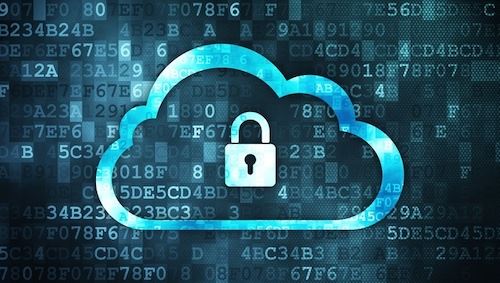The following is a Plus Edition article, written by and copyright by Dick Eastman.
News stories over the past few years about the possibly unconstitutional actions of the National Security Agency (NSA) should serve as a wake-up call for all of us. Yes, there are many people and organizations trying to obtain information about you. From hackers in third-world countries, to companies trying to sell you products, to semi-secret agencies of the U.S. Government, it seems as if nearly everyone is trying to find information about you. This asks the question, “Is it Safe to Trust the Cloud?” Indeed, many people seem to have a phobia about storing their personal information on servers on the Internet.
 What saddens me most of all is that the entire issue is so easily avoided: encrypt the information. When you leave your house, I suspect you lock the door. When you leave your automobile in a parking lot, you probably lock it up, too. The same should be true with your information. When you leave your information unattended, whether it is in your home when you are not present or someplace in the cloud, you should lock it up.
What saddens me most of all is that the entire issue is so easily avoided: encrypt the information. When you leave your house, I suspect you lock the door. When you leave your automobile in a parking lot, you probably lock it up, too. The same should be true with your information. When you leave your information unattended, whether it is in your home when you are not present or someplace in the cloud, you should lock it up.
Simply put, encryption programs scramble data within the file or files that you specify so that no one else can access that data without the key that you keep. Security is under your control at all times because you have the key and you decide who gets copies of that key. Encryption is easy to do, requiring only a few seconds, and (in many cases) it is free of charge.
I know that I am paranoid about security, but I worry about my personal information wherever it is stored–online or on flash drives. I also worry about data stored on my computer at home. There are thousands of hackers around the world running automated scripts that attempt to connect to individual in-home computers to access information, even information that is not stored in the cloud. This remote access is easy to block, but many people don't know how to do that.
Even higher risk is in-home physical access. Sure, I trust my family members with any information I have, but do I trust their friends who visit our home? Do I trust the plumbers, the electricians, the locksmith, the delivery drivers, and others who enter my home, sometimes when I am not there? They could easily access my computer, even if for only a few seconds.
I used to have a job fixing computers in homes and in offices. In more than one case I found viruses had been introduced to computers by babysitters. These same babysitters obviously had easy access to the entire computer's contents and could easily have copied information to a flash drive or sent it by email to another computer anywhere in the world. In most cases, the babysitters had plenty of time to do this.
I no longer have any need to employ babysitters or pet sitters, but perhaps you do. If so, you need to ask yourself if you trust that babysitter or pet sitter with all your secrets.
One simple solution will eliminate all this worry: encryption will lock out prying eyes from your data on your own computer at home as well as protect data stored on flash drives, on web servers, in the cloud, or elsewhere.
Who cares if someone gets their hands on your encrypted files? Assuming the encryption is performed with current, state-of-the art software, nobody can read your encrypted files without knowing those magic characters that will unscramble the files–the encryption key. (NOTE: Multi-bit encryption keys are very different from simple passwords.) Luckily, there are dozens of encryption programs to choose from, and many of them are available free of charge.
Encryption is used by the military, civilian governments, and corporations to keep secret information just that: secret. The U.S. military uses advanced cryptography techniques to document war plans, inventories of atomic bombs, intelligence information, flight plans of bombers, and similar secrets. The banking industry uses encryption to safely transfer billions of dollars every day. If encryption meets the needs of these organizations, it will work for you.
To be sure, the encryption should be performed with one of the better encryption standards of today, which are available in many encryption programs available from many vendors. The secret files also must be made by using a lengthy, multi-bit key to encrypt data using cryptographic algorithm. The key length used in the encryption determines the ease with which a hacker could perform a brute-force attack; longer keys are exponentially more difficult to crack than shorter ones.
For most of us, there is no need to encrypt every file on the computer. In fact, I encrypt only a small number of files. I don't care if someone is able to find and copy my chili recipe or back issues of this newsletter or the schedule for my next airline trip. However, there are a few files that I do not wish to share with others: the list of my credit card numbers, my checking account information, the list of passwords that are too long to memorize, and similar, sensitive data. I have perhaps two or three dozen such files that I wish to keep private. Those are the only files that I encrypt.
I encrypt those files on my home computer's hard drive, and I make sure that no plain text copy exists anywhere. Even that one copy on my hard drive is encrypted. The reason is two-fold: encrypting files on my local hard drive provides protection from babysitters, tradesmen, and that shady brother-in-law that I never quite trusted. In addition, a file that is already encrypted can be copied to any media—including flash drives, online backup services, or to the cloud—all without concern for security. If the file is properly encrypted, it will remain encrypted when copied elsewhere.
What happens if a hacker later obtains a copy of my encrypted file? Nothing.
However, any time I want to view the file, I can enter the encryption key and see the original contents. There are three caveats, however:
1. To later read the encrypted file on a different computer, that computer must have the same encryption program or a compatible one. That is, if I encrypted the file with program XYZ, I must later use program XYZ or a program that is compatible with XYZ to decrypt the data and display it on the screen. However, there are a few programs that will create self-extracting encrypted files; those files can be opened on the receiving computer with no encryption software.
2. I can never, ever forget the encryption key. (A key is somewhat like a password. Actually, keys and passwords are not the same thing, but they are used in a similar manner.) If the original encryption key gets lost, the encrypted file becomes useless. There is no recovery method, and you will never read the information in that file.
3. The encryption key now becomes the most sensitive piece of information of all. I need to protect that encryption key from outsiders.
NOTE: Public and private key encryption is a method that avoids some of the issues with keeping some keys private. However, it also adds some new complications that are equally complex, if not more so. I will skip over a discussion of public and private key encryption as that is an advanced topic that is beyond the scope of this article, and also because most private individuals have little need for a complex system simply to restrict access to a few files. If you have an interest in public-key cryptography, you can read several detailed articles about its inner workings on the World Wide Web. You might start at http://en.wikipedia.org/wiki/Public-key_cryptography.
A quick search online will produce information about dozens of available encryption programs. Luckily, many of them are available free of charge. I haven't had a chance to try all of these, but all of the following enjoy a good reputation.
The remainder of this article is reserved for Plus Edition subscribers only. If you have a Plus Edition subscription, you may read the full article at: https://eogn.com/(*)-Plus-Edition-News-Articles/13286020.
If you are not yet a Plus Edition subscriber, you can learn more about such subscriptions and even upgrade to a Plus Edition subscription immediately at https://eogn.com/page-18077.
 Latest News Articles
Latest News Articles If you do not see a Plus Sign that is labeled "Add comment," you will need to upgrade to either a (FREE) Standard Edition or a (paid) Plus Edition subscription
If you do not see a Plus Sign that is labeled "Add comment," you will need to upgrade to either a (FREE) Standard Edition or a (paid) Plus Edition subscription